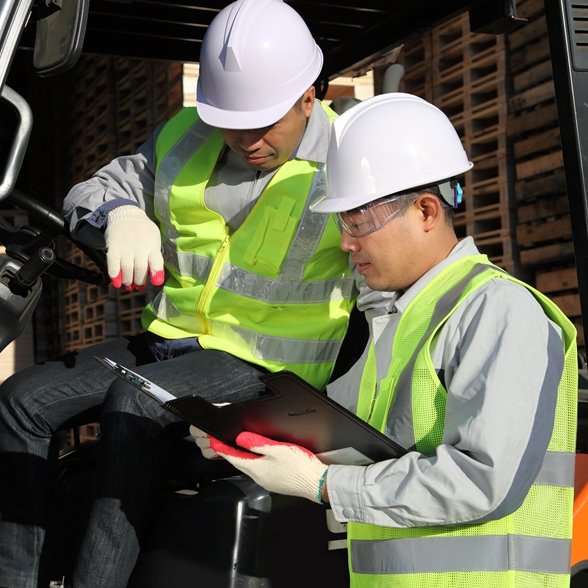
Most equipment in use in business that involves the operation by a human being will involve a “pre-use” inspection. For tractor trailers, for example, a “pre-trip” inspection is standard operating procedure.
For material handling equipment such as forklifts, man-lifts, overhead cranes in their various configurations and model types, a “pre-shift” inspection is the norm and even required by OSHA and the Department of Labor. The benefits are obvious that a pre-use check of this equipment is a “good idea”.
First, the equipment is normally used by many operators in a company for both short term or for long shifts between just a few people. In most cases, multiple people will operate the single piece of equipment. Mechanical equipment can fail, break, falter and quit without warning. The pre-use or “pre-shift” inspection is the real time adversary of the unplanned mechanical failure. The inspection provides critical safety information to the operator that he/she would not otherwise receive. The simple 3-5 minute review of the current state of the equipment is the difference entirely between an accident, catastrophe or fatality or simply a “downed” piece of equipment for the day.
The pre-shift inspection adds years to the life of the equipment. For example, discovering a forklift engine water pump problem before utilizing a forklift in the dead of summer and high temperatures saves the engine from ruin in many cases. Keeping fluids at the correct levels including forklift battery electrolyte keeps internal components from being overly taxed and abused in carrying out the hour by hour functions of the equipment.
Furthermore, following manufacturers’ guidelines contained in the vehicle USER MANUAL narrows the list of possibility of equipment problems. For employers, it is not a lot to demand that equipment operators are diligent and consistent in conducting daily inspections. Operator inspections take only minutes and daily completion of the task can save the life of the operator and other workers nearby. For more information on pre-shift inspection requirements, go to www.OSHA.gov.

